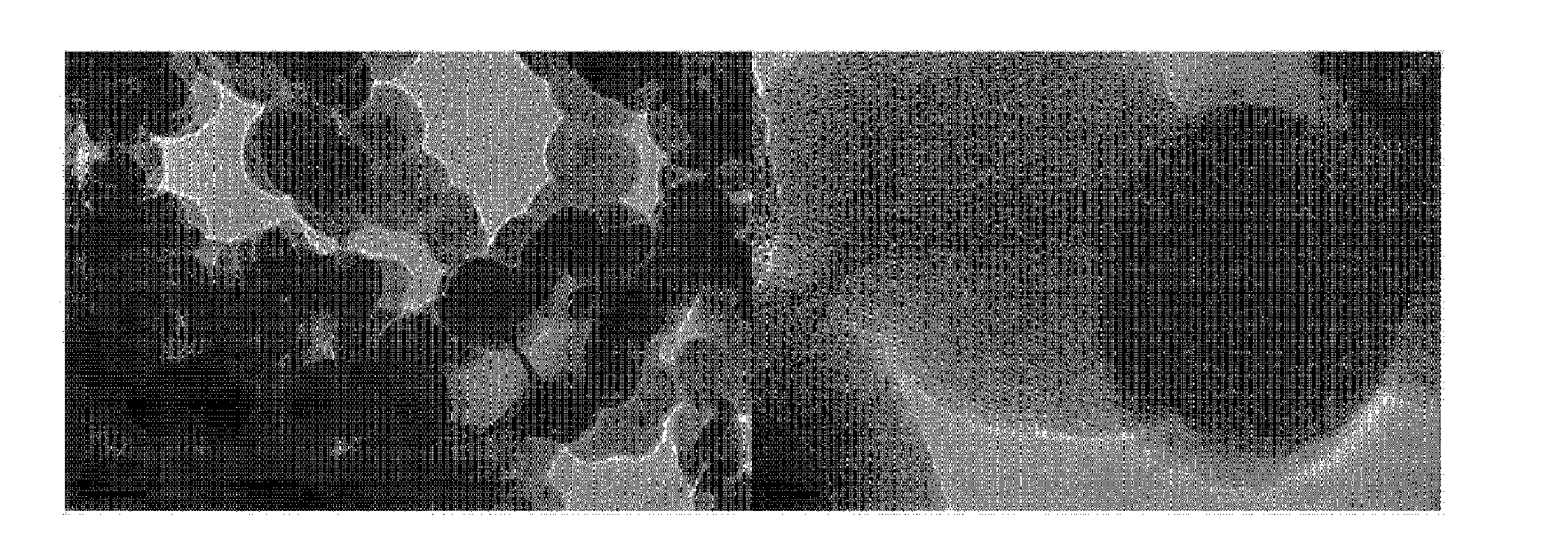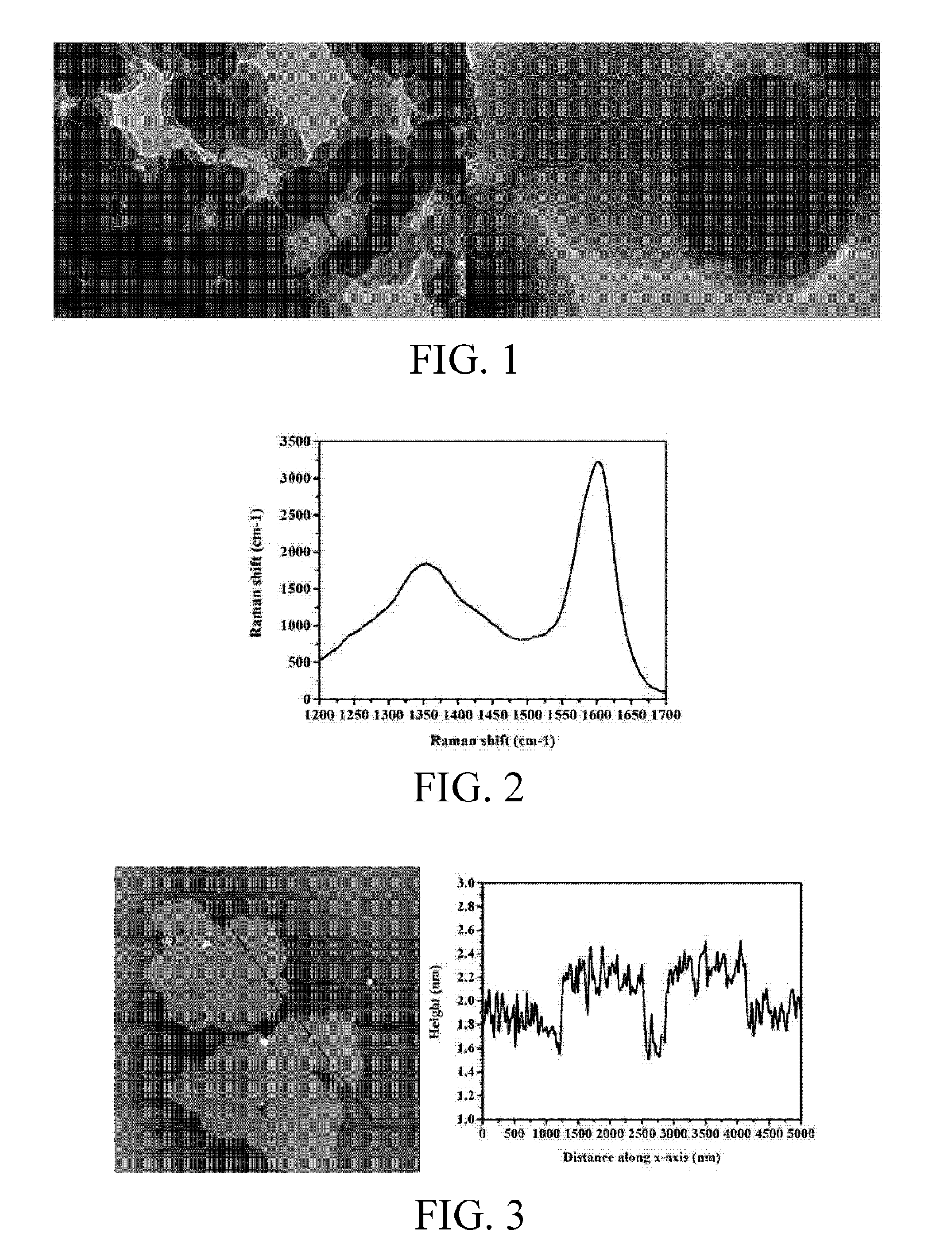Method for preparing graphene from biomass-derived carbonaceous mesophase
a carbonaceous mesophase and biomass technology, applied in the field of advanced materials, can solve the problems of low production efficiency, poor repeatability, and small yield of the method, and achieve the effects of reducing inter-layer spacing, maintaining the stability of the graphene structure, and large inter-layer spacing
- Summary
- Abstract
- Description
- Claims
- Application Information
AI Technical Summary
Benefits of technology
Problems solved by technology
Method used
Image
Examples
embodiment 1
[0028]A single crystalline silicon wafer was soaked into an ethanol solution of a biomass-derived carbonaceous mesophase with a concentration of 0.01 wt %. The single crystalline silicon was taken out after 30 minutes, and was dried at room temperature, and then a layer of biomass-derived carbonaceous mesophase film was attached on the surface of the single crystalline silicon wafer. The single crystalline silicon wafer was subject to a heat treatment at a temperature of 600° C. for 6 hours under the protection of a pure hydrogen atmosphere. Then a stacked graphene film was formed on the surface of the single crystalline silicon wafer. The transmission electron microscope photo thereof is shown in FIG. 1. Furthermore, the single crystalline silicon wafer was subject to ultrasonic dispersion in ethanol, to obtain an ethanol sol of graphene.
embodiment 2
[0029]A polycrystalline silicon wafer was soaked into an ethanol solution of a biomass-derived carbonaceous mesophase with a concentration of 0.5 wt %. The polycrystalline silicon wafer was taken out after 30 minutes, and was dried at room temperature, and then a layer of biomass-derived carbonaceous mesophase film was attached on the surface of the polycrystalline silicon wafer. The polycrystalline silicon wafer was subject to a heat treatment at a temperature of 800° C. for 2 hours under the protection of a pure hydrogen atmosphere, namely. Then a stacked graphene film was formed on the surface of the polycrystalline silicon wafer. The Raman spectrum is shown in FIG. 2. Furthermore, the polycrystalline silicon wafer was subject to ultrasonic dispersion in ethylene glycol, to obtain an ethylene glycol sol of graphene.
embodiment 3
[0030]Polycrystalline powder was soaked into an ethanol solution of a biomass-derived carbonaceous mesophase with a concentration of 1 wt %. The polycrystalline powder was taken out after 20 minutes and was dried at a temperature of 60° C., and then a layer of biomass-derived carbonaceous mesophase film was attached on the surface of the polycrystalline powder. The polycrystalline powder was subject to a heat treatment at a temperature of 800° C. for 2 hours under the protection of a pure hydrogen atmosphere. Then a stacked graphene film was formed on the surface of the polycrystalline powder. Furthermore, the polycrystalline powder was subject to ultrasonic dispersion in methanol, to obtain a methanol sol of graphene.
PUM
| Property | Measurement | Unit |
|---|---|---|
| temperature | aaaaa | aaaaa |
| temperature | aaaaa | aaaaa |
| temperature | aaaaa | aaaaa |
Abstract
Description
Claims
Application Information
 Login to View More
Login to View More - R&D
- Intellectual Property
- Life Sciences
- Materials
- Tech Scout
- Unparalleled Data Quality
- Higher Quality Content
- 60% Fewer Hallucinations
Browse by: Latest US Patents, China's latest patents, Technical Efficacy Thesaurus, Application Domain, Technology Topic, Popular Technical Reports.
© 2025 PatSnap. All rights reserved.Legal|Privacy policy|Modern Slavery Act Transparency Statement|Sitemap|About US| Contact US: help@patsnap.com


